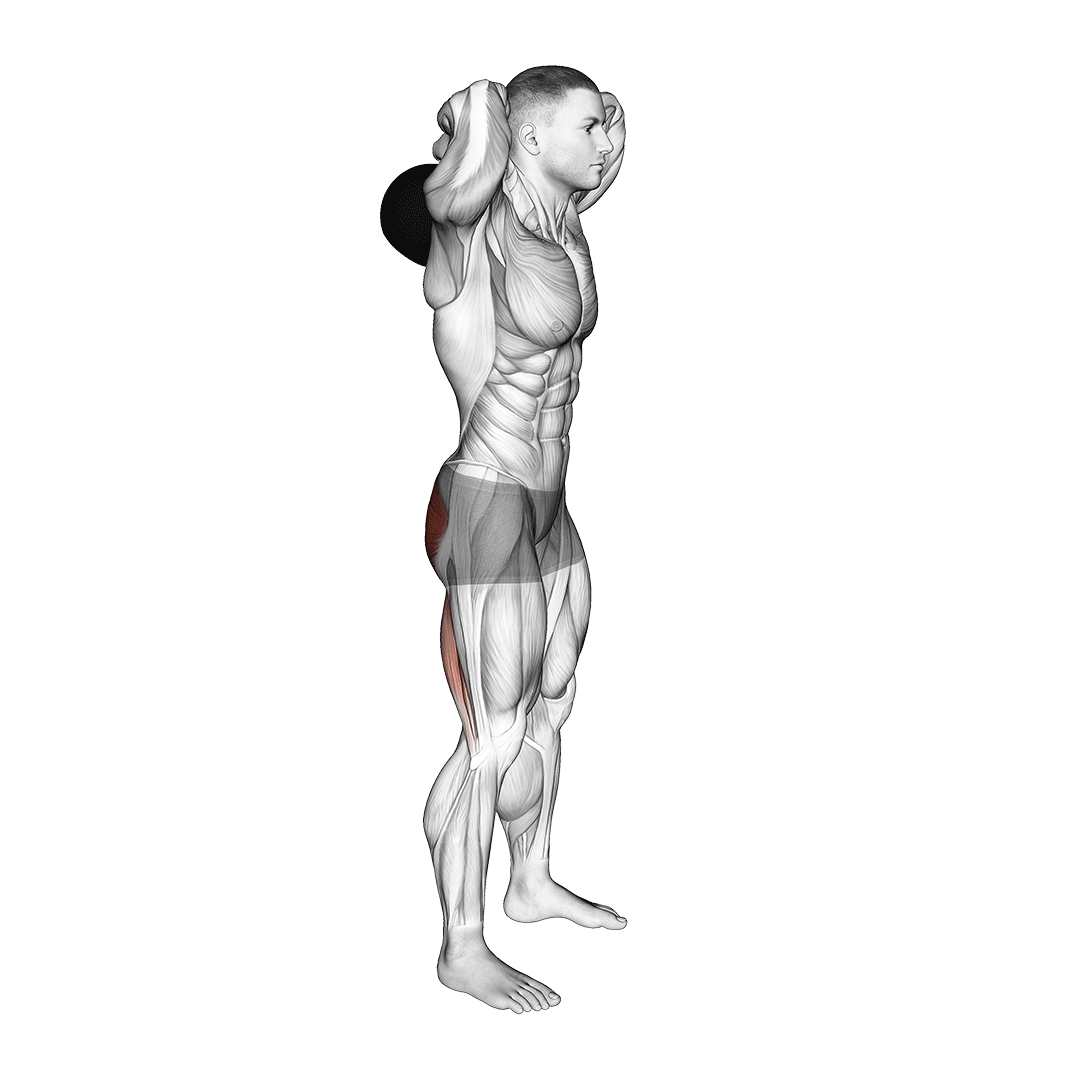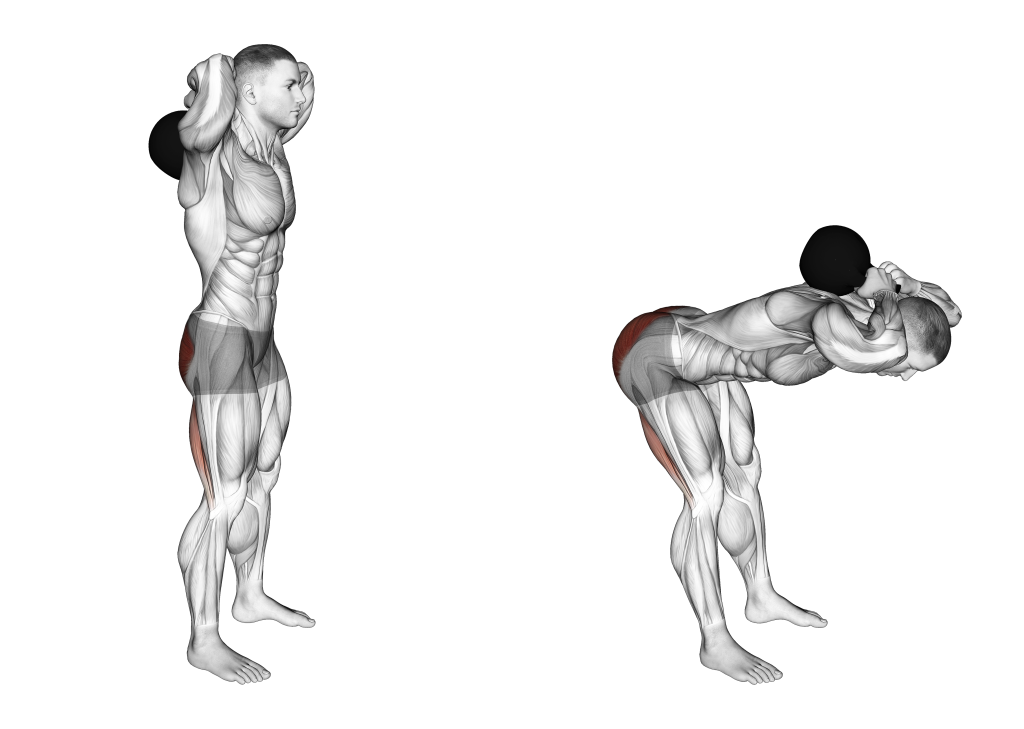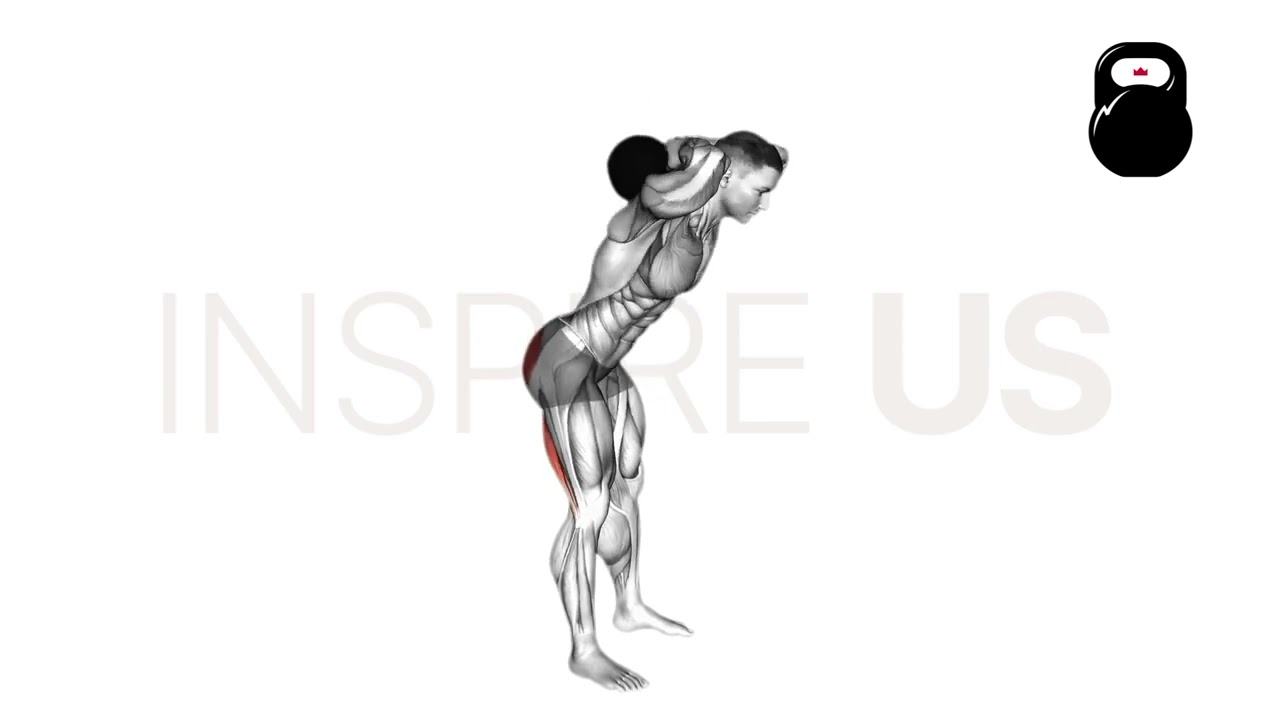Kettlebell Good Mornings Exercise Overview: Muscles Worked and More
The kettlebell good morning is a weighted compound exercise meant to reinforce the lower back, glutes, and other posterior chain musculature.
The movement itself simply involves a forward hinge of the trunk at the hips, the knees locked out and the core braced. The kettlebell will often be held either behind the back in both hands or pressed against the chest, if particularly light.
Kettlebell Good Mornings at a Glance
Equipment Requirements
Kettlebell
Main Muscles Targeted
Glutes, Hamstrings, Spinal Erectors
Difficulty
Moderate
Sets, Reps, and Load Recommendations
3-4 Sets of 10-16 Repetitions at a Light Load
How to Do Kettlebell Good Mornings
- To perform a repetition of the kettlebell good morning, the lifter will begin by first positioning their feet hip-width apart, toes pointed forwards. The core must be tightly braced with tension kept in the hamstrings throughout the entire repetition.
The kettlebell should be held in a secure position either behind the back, beneath the glutes or held close to the chest. - Beginning with the trunk in an upright and vertical position, the lifter pushes their hips back and allows the torso to hinge forwards in compensation.
The knees should bend as little as possible during this motion, flexing just enough to engage the hamstrings without turning the movement into a squat.
The lower back must never round at any point during the exercise. If rounding is present, the lifter is either not correctly hinging at the hips or lacks sufficient posterior chain mobility. - Once the trunk is nearly parallel with the floor (and the lower posterior chain is stretched to their mobility limits), the lifter squeezes their glutes and reverses the hinge by extending their hips forwards.
- When the trunk is once again vertical and upright, the repetition may be considered complete.
Additional Tips:
The position of the head and neck can dictate a surprising portion of proper good morning technique. Ensure the eyes are locked forwards and that the head is aligned with the trunk, no curvature of the neck present.
Another important aspect to consider is the position of the kettlebell. The more detached the weight is from the body, the more stabilization will be required - leading to injury if also combined with poor technique.
For those unfamiliar with good mornings, the best position for the kettlebell is behind the back, the handle held in both hands.
Sets and Reps Recommendation:
For novices or those first trying out good mornings, volume and weight should be tempered until they develop ingrained safe lifting habits.
3-4 sets of 10-16 repetitions at a light amount of weight is a good starting point.
What Muscles do Kettlebell Good Mornings Work?
Kettlebell good mornings are a compound exercise, as they target more than a single muscle group throughout their range of motion.

These muscle groups are primarily the glutes and hamstrings, of which act to extend the hip and allow for the hinging movement pattern to take place.
Alongside the aforementioned are the core and spinal erectors - both being worked in both a dynamic and static capacity so as to maintain trunk stability and hinging at the hips.
Common Kettlebell Good Morning Mistakes to Avoid
In order to minimize risk of injury and maximize muscular development, lifters should avoid the following common mistakes.
Rounding the Lower Back
The most vital mistake to correct when performing good mornings is poor lower back curvature. The unique position and nature of the good morning equates to a significantly higher risk of acute lower back injuries - especially when performed with heavy amounts of weight.
The lower back should remain neutral and flat throughout the entire set.
Neither flexion nor extension should take place, meaning that the core should also remain braced to help facilitate this lower back neutrality.
One good cue to follow is to imagine tucking the lower ribs into the waist, squeezing the abs and glutes as the cue is followed.
Bending the Knees Excessively
Though some amount of knee bend may be needed for proper hamstring engagement, allowing them to bend excessively can draw emphasis away from the glutes and lower back.
Lifters should aim to bend their knees as little as possible while simultaneously preventing them from fully extending. Likewise, this flexion of the knees should remain static throughout the set, with no actual dynamic movement of the joint present.
Rapid Tempo/Dive-Bombing
The kettlebell good morning is an exercise made safer through a slow and controlled tempo.
Allowing the trunk to rapidly descend downwards can lead to a breakdown in form, and otherwise force the spine to absorb more force than is necessary.
Each repetition should involve a descending phase stretched out for up to three seconds in length, ensuring all muscles are targeted with sufficient tension and that no excessive momentum is present.
Leading With the Upper Trunk
Lifters may occasionally make the mistake of performing kettlebell good mornings with the upper torso leading the movement. This can lead to hyperextension of the lower back - or otherwise recruit muscles apart from those meant to be targeted.

Rather than leading the movement with the upper body, the lifter should instead focus on the hips as the main source of movement.
During the initial half of the repetition, the hips should lead by pushing back, with the trunk only hinging forwards as a secondary motion. Likewise, during the latter half, the hips should extend and push forwards, rather than the lifter pushing their trunk back upwards at the lower back.
Who Should Do Kettlebell Good Mornings?
Kettlebell good mornings are the perfect exercise for reinforcing the lower back, improving hip hinge mechanics and strengthening the entire posterior chain.
However, these advantages come at the cost of an intermediate barrier to entry. Those unfamiliar with proper core bracing, spinal neutrality and hip hinging mechanics should first master these actions before attempting kettlebell good mornings.
Likewise, individuals with a history of lower back, hamstring or hip issues may wish to first speak to a physician prior to attempting any sort of weighted exercise.
References
1. Vigotsky AD, Harper EN, Ryan DR, Contreras B. Effects of load on good morning kinematics and EMG activity. PeerJ. 2015;3:e708. Published 2015 Jan 6. doi:10.7717/peerj.708

